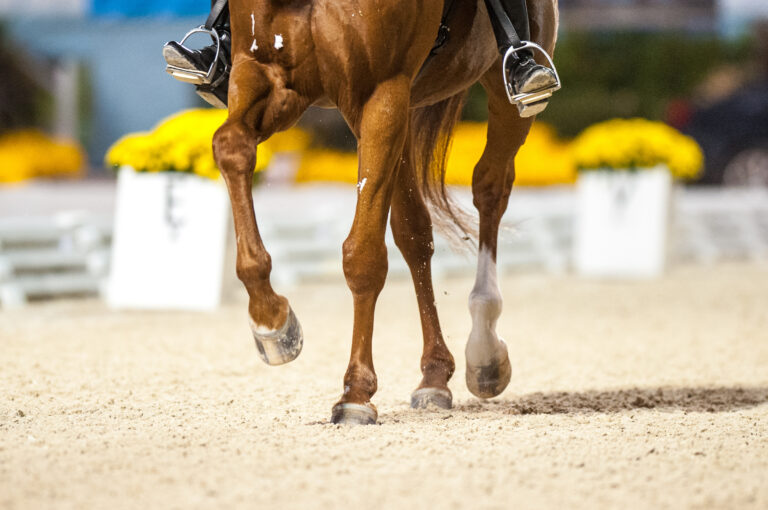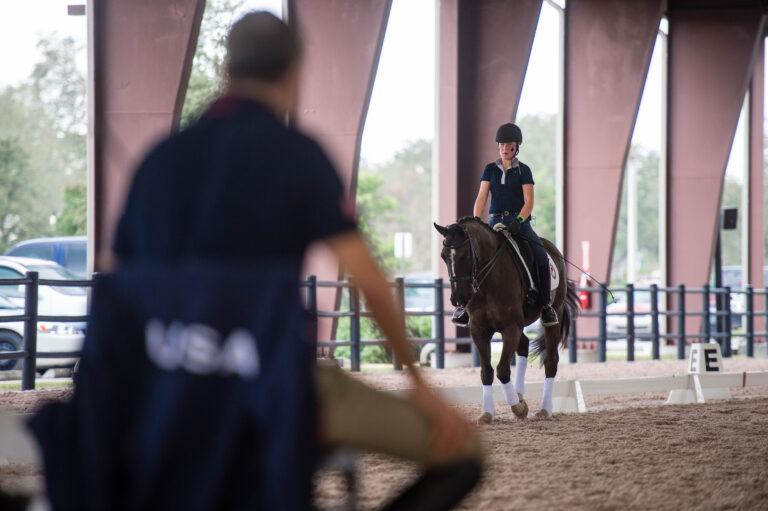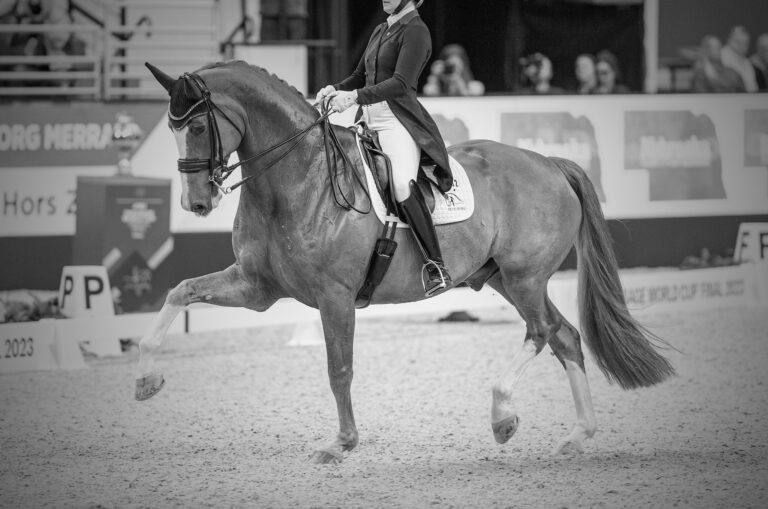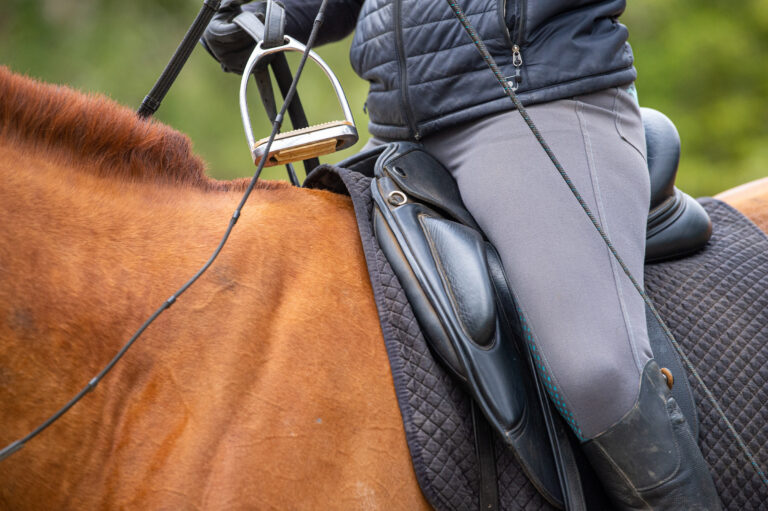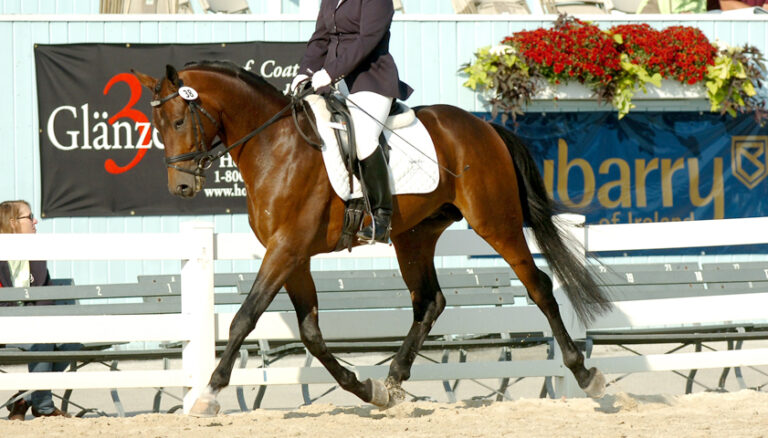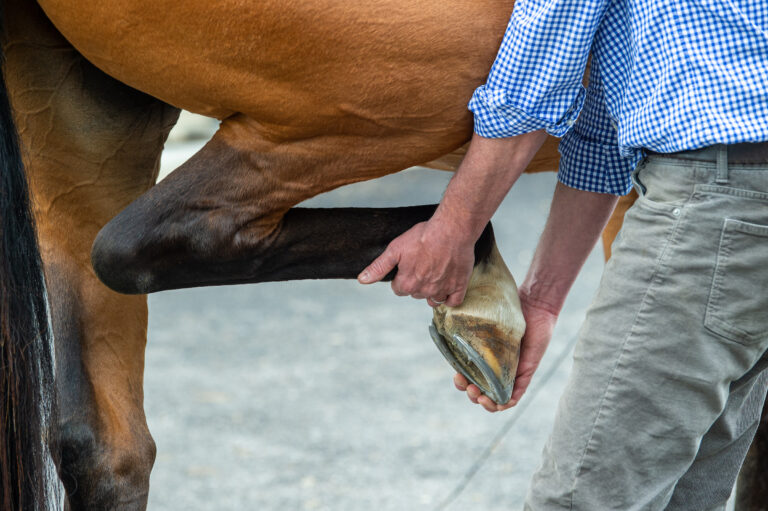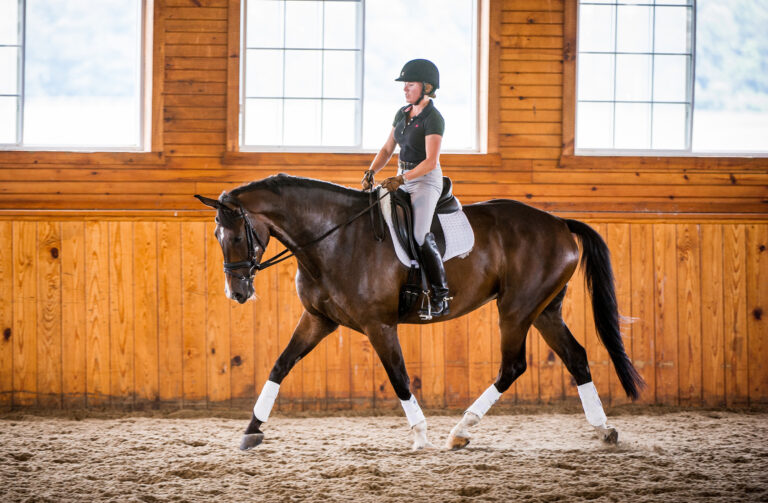
This photo shows Vanessa Elliot showing her 11-year-old Irish Sporthorse at Second Level for the first time. The angle of the photo makes it not so easy to guess, but she is showing a medium trot across the diagonal.
Her horse appears to be relaxed, forward-going and concentrating. The overall image is weakened by her horse’s slight head tilt and how she is holding her hands a bit too wide apart and low.
I notice that the side of the bridle looks loose. This often indicates that the bit may be too low in the horse’s mouth. When the rider takes rein contact, the side of the bridle is, therefore, not holding the bit any more, which can make the contact heavier than necessary.
Vanessa needs to have a more even contact on both reins on the diagonal. Her horse’s head position makes me guess that she has more contact on the right rein in this moment. This will shorten her horse’s stride, which is not
a directive of the medium trot.
If a horse carries his head in front of his right front leg, it will limit the ground cover of that front leg and lower the expression of the forehand in the medium trot.
Try this: Imagine that the horse’s shoulders are walls and when flexed in the poll he should not scrape his nostrils along those walls.
Looking at the rider’s hand position close up, I notice that not only is her hand low, but it is also turned inward with her little finger pointing out. This position mistake of the hand is influencing much more than we often think. You can feel it for yourself.
Try this: Start turning your hand inward more and more. This will move your elbows out, round your shoulders and upper body, and whereas opening your hands and turning them with your thumbs pointing out will move your elbows closer to your body, your upper arms out, your shoulders back and your upper body into a stretch.
Our body uses movement patterns like a domino system to activate an automatic chain reaction. The most known patterns are: stretching up or crouching down. When riding with the hands turned inward, you activate opposite movement chains in your body. While you want to sit upright and stretch your body (from inside out), you also want to bend down more (from outside in, hands to body). Wherever these two directions meet, there is a critical area. It can mean stiff shoulders or neck, uncontrolled nodding in the head, instability in the core, etc.
Vanessa’s seat appears supple and her legs relaxed, but her knees are a bit too open, causing her toes to point out. I could imagine that carrying her hands more upright could help her straighten up in her upper body and, with more core stability, her leg position would improve without unwanted tension.
Sometimes riders want to push the horse more forward with the seat for medium trot. This can incorrectly cause the pelvis to tilt backward. As a result, core stability and the uprightness of the upper body get lost. Then the intention of pushing forward is not achieved. On the contrary, the horse is disturbed in his balance and the movement will lose quality.
In the photo Vanessa is tilting slightly back in her pelvis. My impression is more that she got left behind and did not move forward together with her horse, as her supple leg position hints that she is not overpushing with her pelvis. Sometimes, shifting your upper body weight with the horse’s to the place where the next step will land can be helpful to avoid getting behind the movement. A more forward tendency will help to straighten and correct the horse’s head tilt.
Vanessa and her horse are an elegant pair, and with some more practice and experience, they will be able to develop through the levels, I am sure.
Susanne von Dietze is a leader in equestrian biomechanics. A physiotherapist, licensed Trainer A instructor and judge for dressage and show jumping, she gives lectures and seminars throughout the world, including at the prestigious German Riding Academy in Warendorf. She is a native of Germany and now lives with her husband and three children in Israel, where she competes at the international level. She is the author of two books on the biomechanics of riding: Balance in Movement and Horse and Rider, Back to Back. Find her books at HorseBooksEtc.com.


